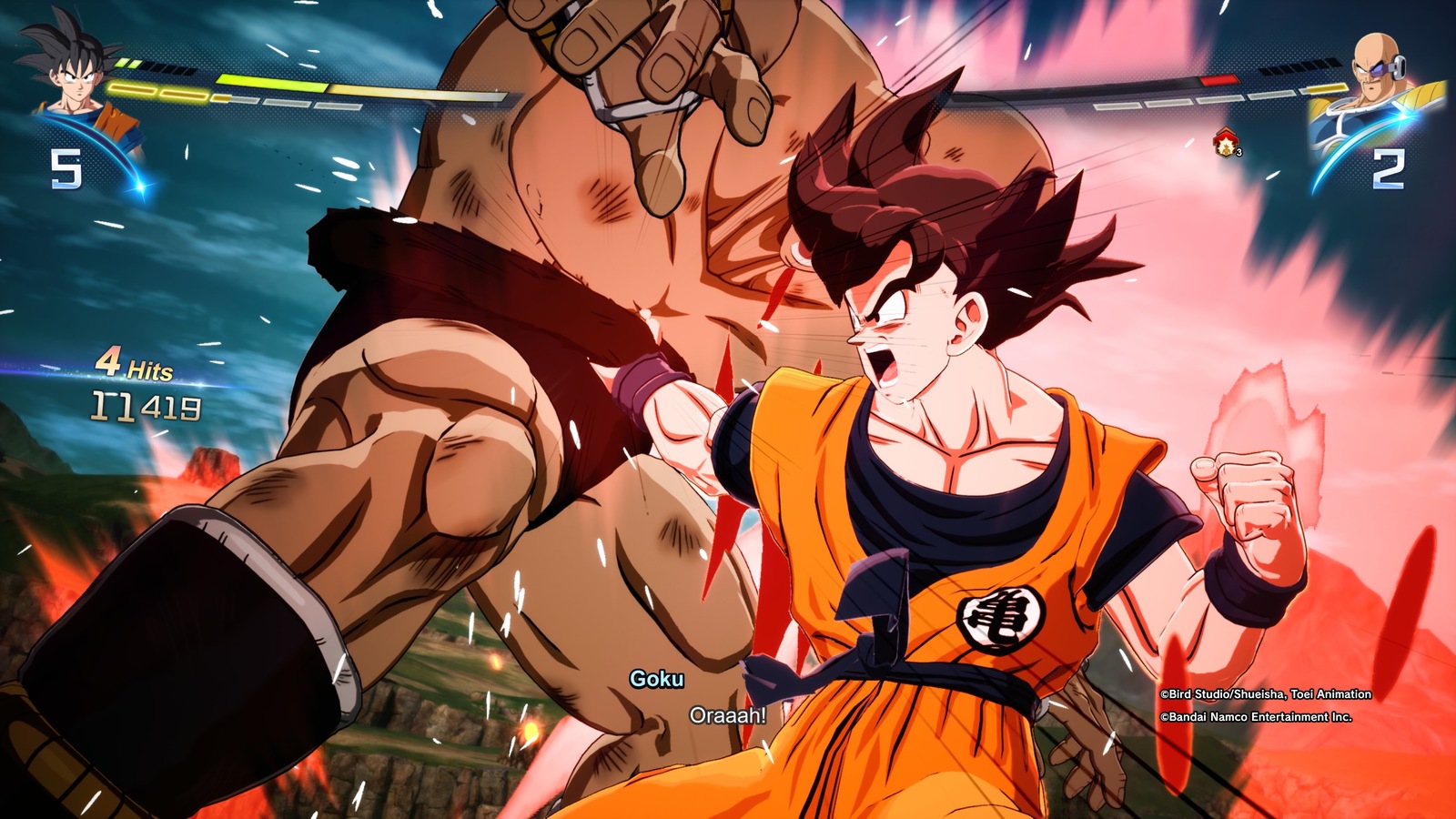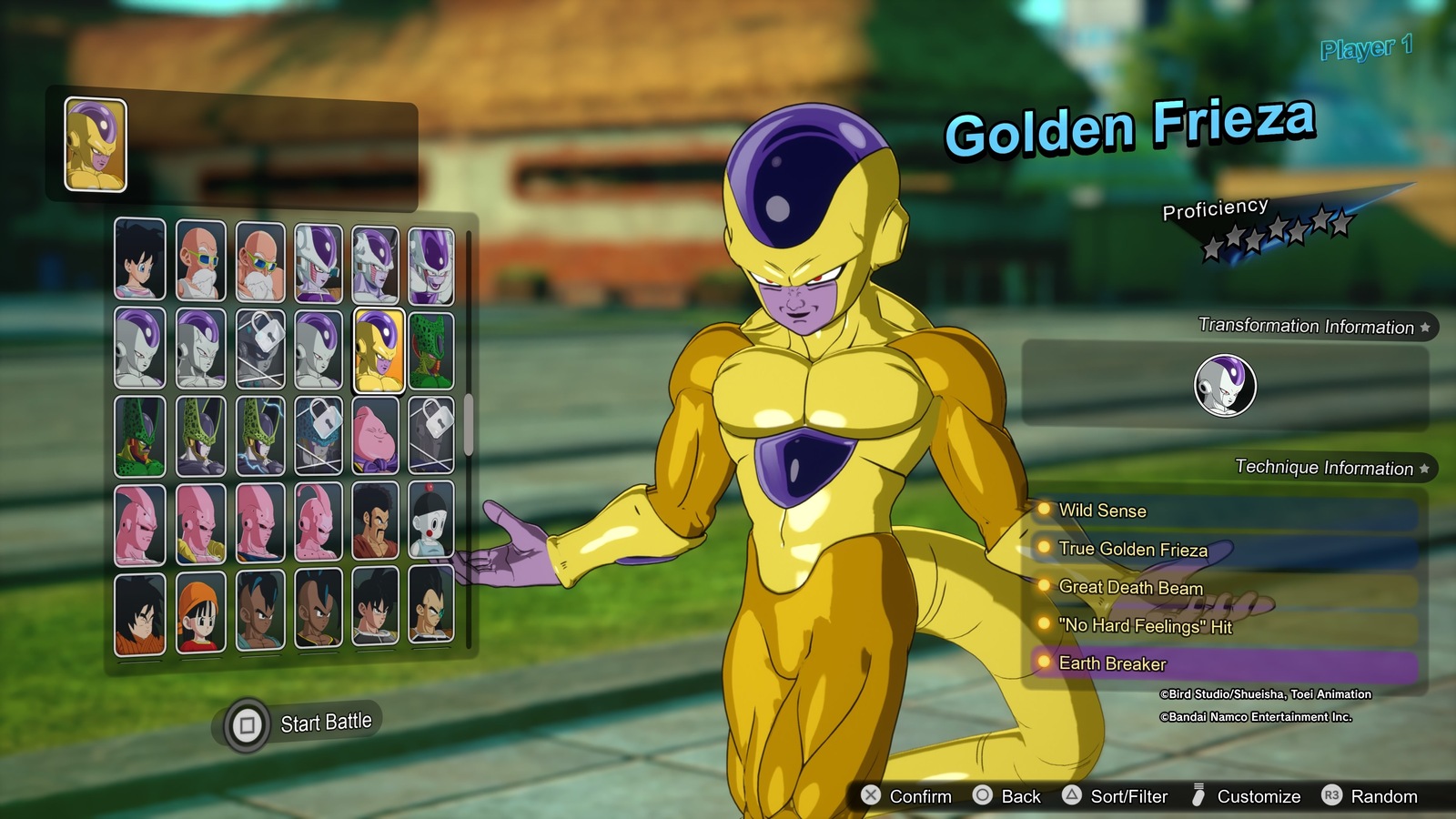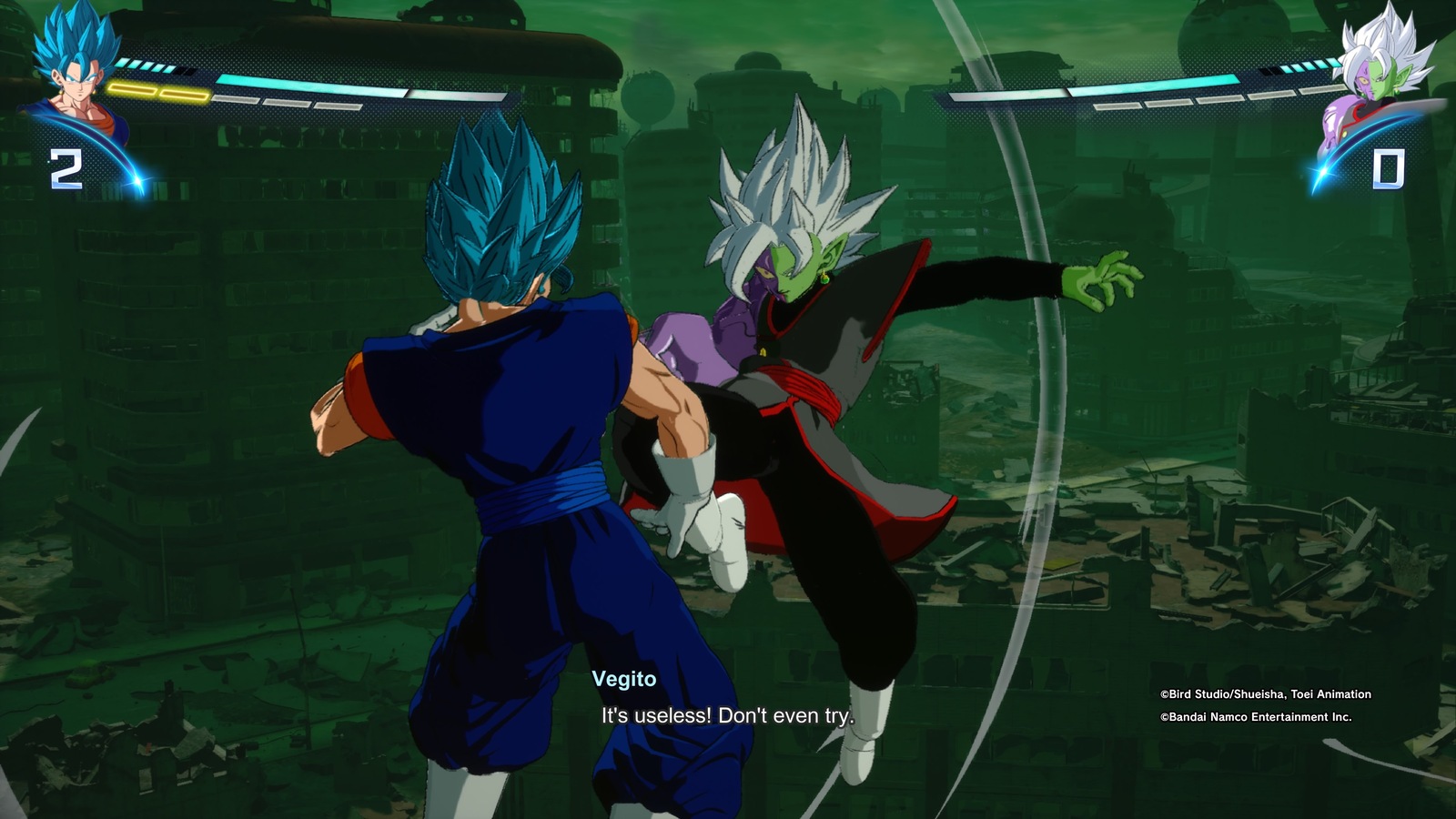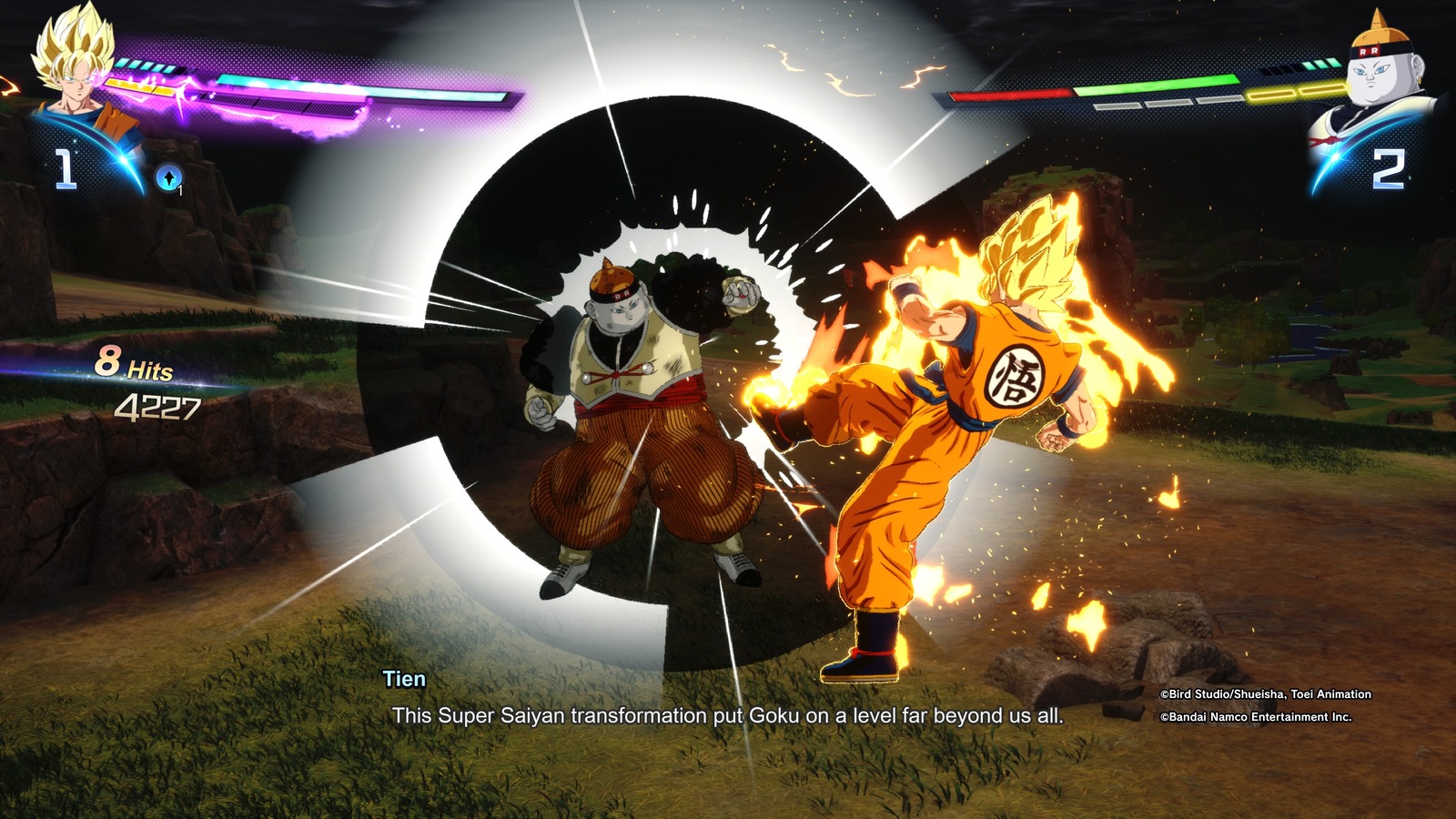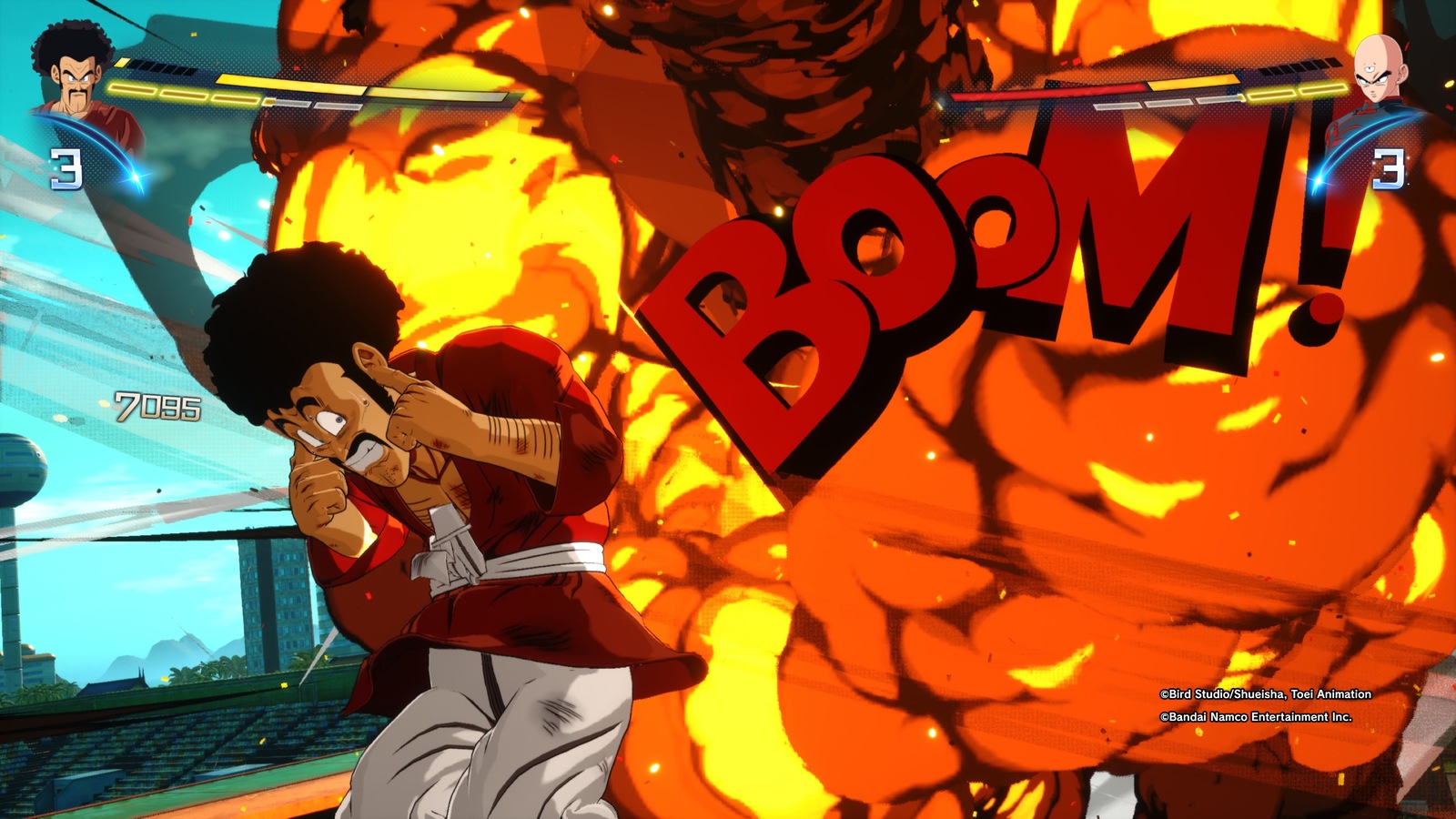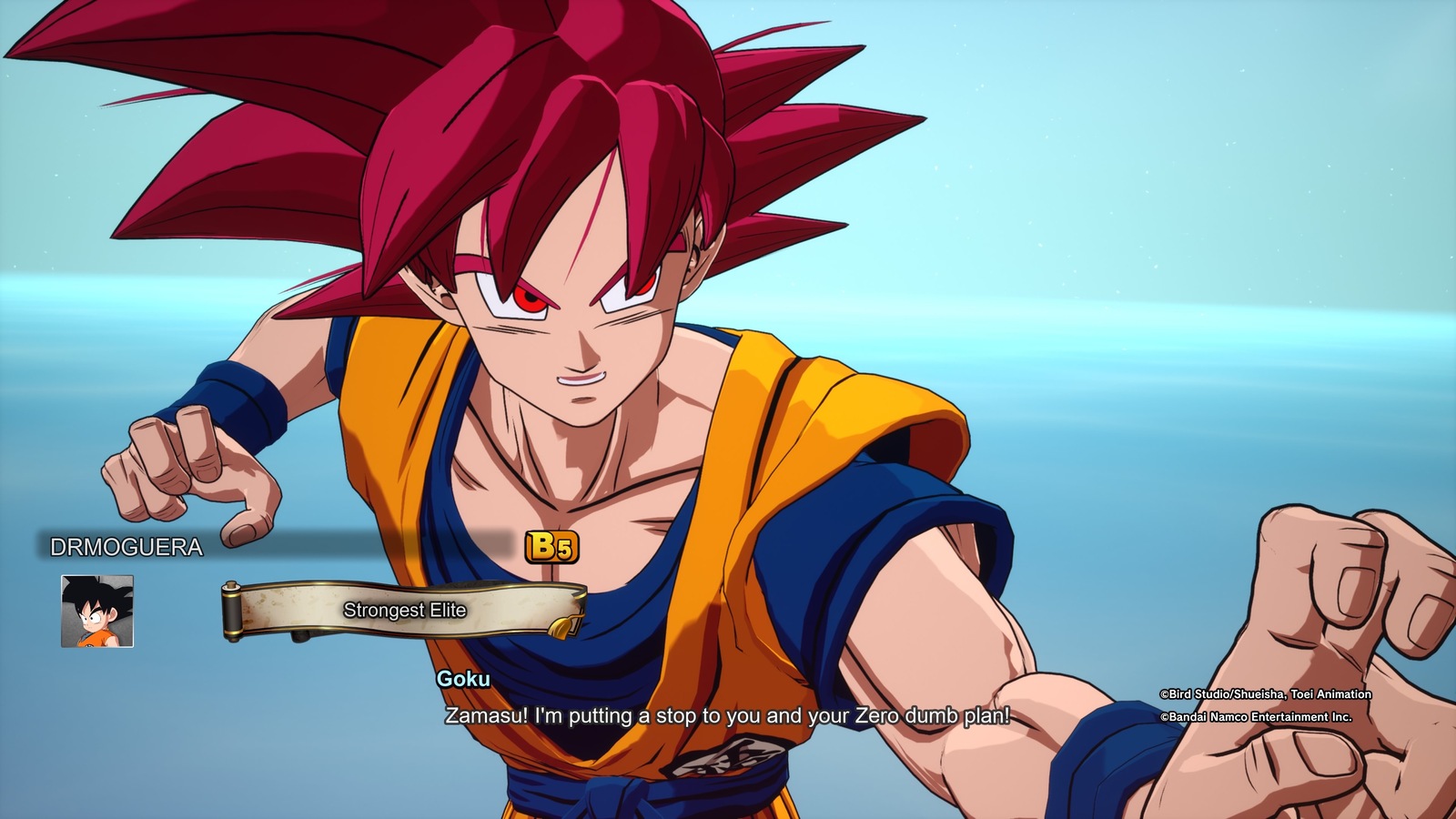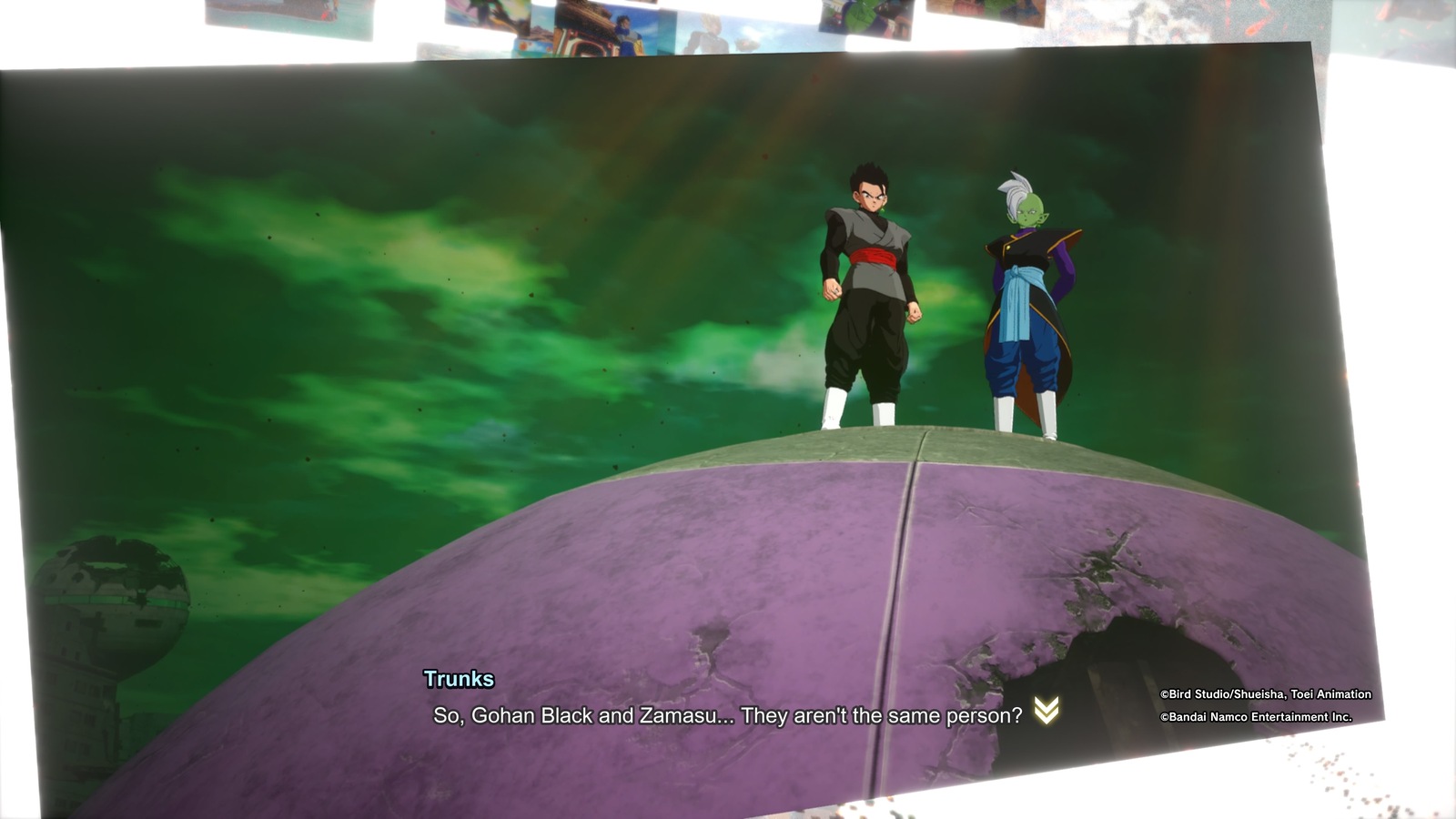Dragon Ball pushes limits. Anyone familiar with this series knows that the villains always pose more of a threat than the last one, Goku always gets stronger to fight them, and the universe(s) always get bigger to accommodate the escalation. Sparking! Zero captures that spirit to break boundaries with a staggeringly large roster of playable characters, a keen attention to detail in its visuals, and the opportunity to create your dream DB scenarios. Yet for as many limits as Sparking! Zero pushes, just as many limits push back.
To put this in Dragon Ball terms, imagine a barren wasteland conveniently devoid of any humans or animals. On one end stands Goku, firing off a Kamehameha containing the earnest expectations of Dragon Ball fans simply looking for an authentic interactive version of a series they love. While the blast’s power level may be questionable on paper, it carries with it an undeniable appeal that makes it easy to root for. However, on the opposite side of the wasteland, Vegeta counters with a Gallick Gun full of cold, rigid standards that any game should meet whether it’s related to a Dragon Ball or not. While this dose of reality makes an objectively powerful point, it lacks the heart that anyone buying a game like this is likely after.
The victor of this struggle depends on how much you value the Dragon Ball in your Dragon Ball game. Sparking! Zero contains a lot to like for longtime fans – it arguably works harder to please them than it does at being a truly excellent game. Most games based on popular series struggle with this existential clash, and Sparking! Zero brings it directly to the forefront due to the limits each side of the argument imposes. Obviously, Goku always wins in the long run, even when he loses. The question is how close of a call it ends up being.
So let’s break out the scanners and start measuring some data. Appropriately, the game’s battle system best demonstrates the competing limitations in its heart. Sparking! Zero falls approximately into the genre bucket of “fighting game,” but that descriptor alone is misleading. Nothing else on the modern fighting game market plays like Sparking! Zero, whether it’s Street Fighter 6, Tekken 8, or your anime arena fighter of choice. Instead, Sparking! Zero develops a unique fighting style that takes a surprising amount of effort to wrap your head around.
From the moment I picked up the controller, I realized that I underestimated the game. Battles take place in vast 3D arenas based on iconic Dragon Ball locales. While the environments look inviting to nostalgic fans, traversing them proves less so. Simple moving to and from your opponent efficiently requires intricate knowledge of button combinations for various dashes and teleports as well as the resources (like an energy meter and skill points) tied to performing those actions. Games based on popular licenses tend to err on the side of simplicity, yet this isn’t the kind of game you can just pick up and play. The tutorial is mandatory. Frankly, training beyond the tutorial is mandatory.
Just about every type of interaction in Sparking! Zero requires sufficient knowledge and effort before it becomes intuitive. The defensive options make that point clearest. Most fighting games lately skew towards offensive options – they give players as many tools as possible to quickly pressure an opponent to land a hit. Each series of moves culminates in the hit, which then sets the stage for the next series of moves. In Sparking! Zero, however, the hit is just the beginning. A well-timed button press by your opponent can easily break your combo and completely reverse positions, trapping you in their offense…at least until you break their combo and reverse things again. Eventually one of you will miss an input or run out of resources to use these counters, but it’s usually only after an exhaustive struggle.
Notably, the nuances of the defense – how you break combos, how you start your own offense, or how you prevent someone from landing a hit at all – are virtually invisible from the game’s presentation. You just have to know what buttons to press and when. You just have to know that your skill points decide what kinds of attacks you can negate. And frankly, you just have to know when even going through the hassle of all of these defensive options is worth it in the first place. Sparking! Zero doesn’t babysit its players in any sense, which comes with advantages and disadvantages.
The strength of this battle system emerges from its mixture of flashy visuals and strategy. The lack of prompts and overbearing UI allow the graphical presentation and loving recreation of Dragon Ball’s visuals to shine. Every fighting mechanic works together in a natural-looking way that gives the game the appearance of an anime episode come to life. On some level, that naturalness is what playing a game like Sparking! Zero is all about. Nothing else captures Dragon Ball’s pacing so well – in particular its tendency to escalate and deescalate tension like a polygraph.
My favorite moments are the “quiet” ones in between the martial arts exchanges, where the fighters become separated and start charging their energy. Everyone likes a good screaming session in the anime, and Sparking! Zero injects these moments with a fun element of strategy. All of a sudden, the match transforms into a game of chicken, where the first person to stop charging dictates the next stretch of the match. Do you hold out and power up your fighter to his maximum? Do you stop first and rush in for an attack while the opponent is distracted? Or do you predict that your opponent will rush in first and have a counter ready the moment they reach you? The fact that the fighting mechanics can create tension like this before a blow even lands speaks to how well they adapt Dragon Ball’s essence.
Still, in terms of actual gameplay these systems can be frustrating. Sparking! Zero’s system lacks the temporary bouts of catharsis that landing a hit in more traditional fighting game systems provide, which can make encounters resemble unsatisfying scrambles more than triumphs over your opponent. A general feeling of imprecision characterizes little moments: missing a counter window can occasionally feel arbitrary, a super attack will home in on your opponent in a bizarre way that results in an unpredictable whiff, or your character will interact strangely with part of the environment. Through a combination of little imprecisions, Sparking! Zero matches feel more like maximizing your odds of success than 100% genuine tests of skill.
Those imprecisions don’t matter much if you consider Sparking! Zero a casual game simply about having a fun time, yet its hardcore learning curve undoubtedly limits its appeal for filling that kind of role. This is not the kind of game you can sit any Dragon Ball fan in front of to mash buttons and win. Without a solid grasp of the basics, they’ll fail to land any impressive moves at all, let alone escape the seemingly endless chains of attacks from their opponent.
At the same time, Sparking! Zero doesn’t neatly fit the role of a hardcore fighting game. The massive roster of playable characters comes with a massive disparity between them. When you have a dozen Gokus, some will naturally be better than others. It goes beyond that, too: some characters simply take better advantage of the game mechanics than others. Characters with shortcuts to accessing the “sparking” mode (an ability that otherwise requires a lot of energy charging) or minimize the amount of energy they need to use tend to have a clear advantage over those that don’t.
That’s OK on paper; when you play a Dragon Ball game you want some wackiness. Mr. Satan shouldn’t be able to compete with Jiren. Saibamen should be weak with the caveat that they have access to an insta-death suicide bomb attack. These lopsided balance choices sell the authenticity of the Dragon Ball experience.
Yet Sparking! Zero wants to have its comically large, unbalanced cake and eat it too. Several choices made in and around the game suggest that, despite appearances, this is a competitively viable game. A “DP” feature assigns each fighter a relative strength rating that prevents players from stacking their team with gods and Ultra Instinct Gokus. A ranked online mode uses this feature to attempt to objectively determine the best players of the game. Bandai Namco runs tournaments for the game with prize money.
For a more traditional fighting game all of those things would come with the territory. For Sparking! Zero, it feels misguided. The tension between the competing casual and competitive philosophies recently came to a head in a tournament where Bandai Namco disqualified players for exploiting Sparking! Zero’s obviously exploitable game mechanics. Basically, players used Android characters with infinite energy to play keepaway indefinitely. This resulted in allegedly serious matches of characters flying up and down repeatedly for ten minutes at a time. It looked ridiculous, but it’s the kind of ridiculousness you sign up for by playing a game pushing the limits of its roster in an optimized setting.
After the tournament, Bandai Namco responded to this technique by patching the game with some mechanical additions and a removal of the ability for the android characters to infinitely dash around. While some of their adjustments unambiguously improve the game, removing this exploitable trait entirely sets a rough precedent for the game going forward. I can easily foresee some other kind of broken strategy gaining prominence down the line, and what then? Bandai Namco continually playing whack-a-mole with a game where exploitation of its lack of balance is a core part of its identity risks hammering the fun out of the game altogether.
I suppose time will tell how it all plays out in the end, but the development team is certainly making things harder on themselves by attempting to court two completely different kinds of audiences with one game. Ultimately, it’s hard to tell if they are successfully courting either in the long run. Sparking! Zero sits in a precarious position. It’s too difficult for a casual audience to pick up and play, while also too unwieldy for serious competitive play. Instead, the game speaks primarily to a highly specific niche of Dragon Ball fans searching for some faithful fanservice and devoted enough to go through the effort of extracting it from a game that is questionably rewarding to play at a high level.
Most of Sparking! Zero’s features beyond its roster and fighting system also come across as questionably rewarding. While the limits of the battle system mostly come from invisible, external expectations for the game, the limits of the single player modes are plainly apparent.
The Episode Battle mode allows you to take on the role of various Dragon Ball characters and play through their canonical battles throughout Dragon Ball Z and Dragon Ball Super. That’s nothing new for Dragon Ball games – most at least go through the well-trodden territory of adapting the Z arcs. For me, the real highlights were the adaptation of Super stories like the Goku Black and Universe Survival arcs.
That said, the presentation of these stories leaves much to be desired. Episode Battle tells these stories primarily through still scenes of character models awkwardly posed or standing around. The whole experience feels low budget and haphazardly thrown together, as it skips across events seemingly at random. The lack of detail in this mode stands in stark contrast to the excellent presentation of the battles themselves.
If you simply went through these stories as is, Sparking! Zero would easily be one of the most boring ways to experience them. Thankfully, Sparking! Zero spices up these retellings with the potential to branch out into various “what if?” scenarios. By occasionally making choices that differ from the “canon” events of the story, Sparking! Zero carves out some room to tell entirely new stories…or at least that’s the idea. In practice, the limits of the game push back even more strongly here.
I can handle some cheap presentation as long as the stories surrounding it are genuinely fun. Unfortunately, most of these alternate branches don’t tell new stories so much as they change variables. What if Goku survived his fight against Raditz? Well, basically all of the same things as the real story would happen, except all of the subsequent villains would be defeated under somewhat different circumstances. What if it wasn’t Goku Black who ruined Future Trunks’s timeline, but Gohan Black? Well, basically all of the same things as the real story would happen, except the story would end under somewhat different circumstances.
Whether it’s due to budgetary constraints or creative ones, most of these new stories stick disappointingly close to the originals. It began to grate on me – what exactly is the point of introducing these scenarios in the first place if you aren’t going to do anything genuinely new or fun with them? Even ones that could be interesting typically end before they begin. What if Mecha Freeza defeated Future Trunks? Well, a small paragraph of text explains that he went on to defeat everyone else, too. That’s it, seeya!
The annoying methods of unlocking these alternate branches add insult to injury. The majority of them require you to defeat the AI opponents under tenuous circumstances. It’s hard for even a traditional fighting game to make fighting AI fun, and Sparking! Zero’s Episode Battle fails that mission especially badly. The AI feels over-tuned to an extreme that you more or less need to exploit the sparking mode to negate their defenses. If you don’t, they’ll effortlessly counter and pummel you into the dust to a degree that even experienced humans wouldn’t be able to. Even if you wanted to tough out a “fair” fight with the AI, many branch requirements require you to defeat the AI under absurdly fast conditions that force you to enter sparking and hit them with your ultimate attack as soon as possible.
This repetitive process turns the Episode Battle into a same-y slog that all blends together over time. Occasionally the Episode Battles will throw out an intriguing idea or feature an amusing scenario, it just fails to execute them even remotely close to their full potential. Some fun can be scavenged here, but it’s few and far enough between to make the effort hard to justify.
I felt the same way about the Custom Battle mode. Here, you can create custom scenarios to play through, complete with your own dialogue, custom title cards, and special battle conditions. It sounds great, but the execution is limited by compromises. You need to select the dialogue from pre-selected phrases (likely an attempt to avoid getting Goku to say anything too inappropriate), the menus are overcomplicated and clunky, and it’s difficult to convey the special conditions you build into the fights to the player in a satisfying way. I gave it a few tries, but I wasn’t satisfied with any of my attempts.
Your mileage with Sparking! Zero will inevitably correspond to how much you enjoy the core fighting and fan service the game offers. For me at least, Goku’s simple appeal carries him to a narrow victory over Vegeta’s more objective standards. A narrow victory isn’t ideal, but on the bright side it leaves plenty of room for growth. Dragon Ball games typically enjoy a long lifespan, so perhaps eventually Sparking! Zero will gain access to god ki or Ultra Instinct, making its victory much more decisive.
DRAGON BALL: SPARKING! ZERO
All Right
Caught in a struggle between being a definitive casual game while also being a hardcore competitive experience, Sparking! Zero makes the best of its numerous limitations. The core game is fun enough, it looks great, and it contains an impressive collection of Dragon Ball fan service. Sparking! Zero pushes limits in all of the ways a Dragon Ball game should. Unfortunately, various limitations push back just as much, resulting in a game that still has plenty of training to do in order to reach its full potential.
Pros
- Large character roster
- Distinctive battle system
- Captures Dragon Ball's essence visually and mechanically
Cons
- Conflicted over the game it wants to be
- Weak single player modes
Jack's background is in law, but he's been writing about games since long before that. He aims to capture a game's essence in (hopefully) new and interesting ways with his writing. Occasionally he will even make his articles fun to read. Results vary on that. Talk to him about Mega Man! Preferably not in the third person!

Caught in a struggle between being a definitive casual game while also being a hardcore competitive experience, Sparking! Zero makes the best of its numerous limitations. The core game is fun enough, it looks great, and it contains an impressive collection of Dragon Ball fan service. Sparking! Zero pushes limits in all of the ways a Dragon Ball game should. Unfortunately, various limitations push back just as much, resulting in a game that still has plenty of training to do in order to reach its full potential.
PROS
- Large character roster
- Distinctive battle system
- Captures Dragon Ball's essence visually and mechanically
CONS
- Conflicted over the game it wants to be
- Weak single player modes
See below for our list of partners and affiliates:
